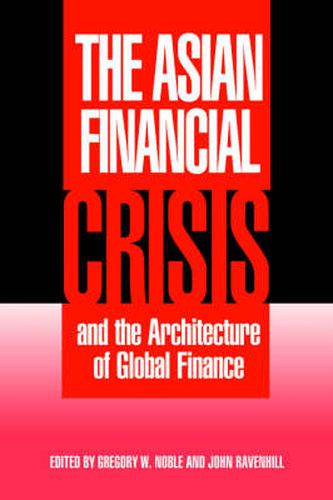Readings Newsletter
Become a Readings Member to make your shopping experience even easier.
Sign in or sign up for free!
You’re not far away from qualifying for FREE standard shipping within Australia
You’ve qualified for FREE standard shipping within Australia
The cart is loading…






The financial crises across Asia in 1997-98 ignited fierce debate about domestic economic weaknesses and flaws in the international financial system. Some analysts blamed Asian governments for inadequate prudential supervision, widespread failures of corporate governance and even crony capitalism. Others assailed the inherent instability of global financial markets and what they considered to be hasty and ill-conceived liberalization taken at the behest of western-dominated international financial institutions. In this volume a distinguished group of political scientists, economists, and practitioners examines the political and economic causes and consequences of the crisis. To what extent were domestic economic factors to blame for the crisis? Why were some economies more prone to crisis than others? What are the costs and benefits of international financial liberalization? Who bears the risks and the costs of measures taken to reduce them? And what are the prospects for reform of the International Monetary Fund, international banking standards, and foreign exchange systems?
$9.00 standard shipping within Australia
FREE standard shipping within Australia for orders over $100.00
Express & International shipping calculated at checkout
The financial crises across Asia in 1997-98 ignited fierce debate about domestic economic weaknesses and flaws in the international financial system. Some analysts blamed Asian governments for inadequate prudential supervision, widespread failures of corporate governance and even crony capitalism. Others assailed the inherent instability of global financial markets and what they considered to be hasty and ill-conceived liberalization taken at the behest of western-dominated international financial institutions. In this volume a distinguished group of political scientists, economists, and practitioners examines the political and economic causes and consequences of the crisis. To what extent were domestic economic factors to blame for the crisis? Why were some economies more prone to crisis than others? What are the costs and benefits of international financial liberalization? Who bears the risks and the costs of measures taken to reduce them? And what are the prospects for reform of the International Monetary Fund, international banking standards, and foreign exchange systems?